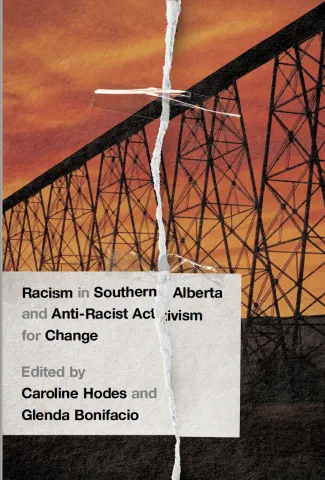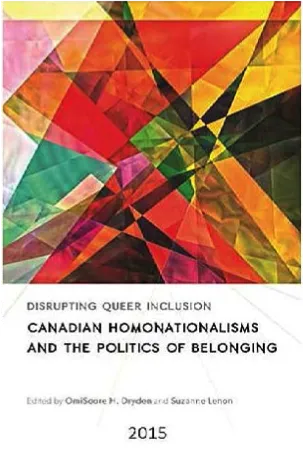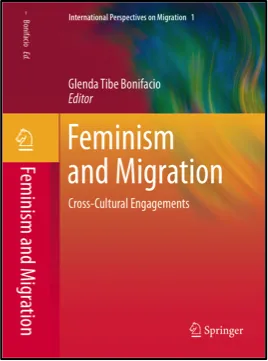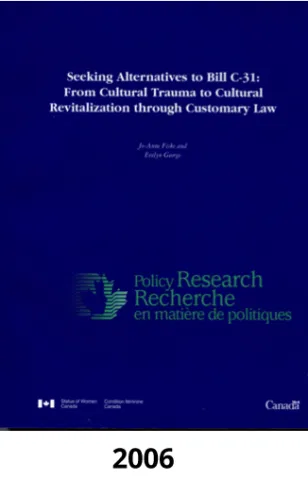Women and Gender Studies
Image
 Racism in Southern Alberta and Anti-Racist Activism for Change
Racism in Southern Alberta and Anti-Racist Activism for Change

In this book, our contributors point to the various ways that race is materialized through different forms of racism in a small city (Mills 2014, 10). This volume shows how racism is one of many interlocking systems of oppression that upholds, reinforces and is inseparable from a range of systemic and structural forms of discrimination and violence that manifest differently at different times and in different spaces in the lives of those who experience them. This volume thereby aims to disrupt the notion that the structural/systemic and the particular, the collective and the individual, are antithetical to one another.
We wrote this book amid the ongoing global uprisings that are taking place in response to the systemic anti-Black racism that led to the police killing of George Floyd in Minneapolis, Minnesota, the intersecting anti-Black, anti- Indigenous racisms that led to the police killing of Regis Korchinski-Paquet in Toronto, Ontario and the anti-Indigenous racism that led to the additional seven police killings over an eight-week period from mid-April to early June of 2020 across Canada: Eishia Hudson, Stewart Kevin Andrews, Everett Patrick, Abraham Natanine, Chantal Moore, Jason Collins and a 31 year-old man from Clyde River in Nunavut whose name has not yet been disclosed. It is being published in the wake of the mass shooting at a Buffalo supermarket in 2022. These deaths have all occurred in the middle of four concurrent, intersecting, synergistic pandemics: the global pandemic of violence against Black, Brown and Indigenous bodies; the global pandemic of gender-based violence that disproportionately targets women and trans identified people; the global pandemic of poverty and finally, COVID-19. Police violence against Black, Brown and Indigenous people is considered state sanctioned violence. Gender-based violence is often framed as a public health problem. Poverty, like racism and sexism, in Canada at least, is often construed as a personal failing rather than a systemic, structural problem. Mass shootings are often represented as the results of mental illness among perpetrators. All of these framings erase the structural and systemic violence central to making them possible. Despite that systemic and structural violence has not been treated with the same urgency as COVID-19, we posit that the global prevalence and health costs combined with the uneven distribution of fatal and severe outcomes make systemic and structural violence akin to synergistic pandemics occurring in tandem with coronavirus rendering some bodies more susceptible to premature death than others.
This framing is uncomfortable. This book is intended to make people uncomfortable. It is intended to draw into question the uncritical move away from naming racism to talking about diversity and inclusion. It is designed to lead to more questions, not to provide answers. It is an act of resistance against what Ien Ang (1995) refers to as a “more sophisticated and complex form of assimilation” (180). As Irfan Chaudhry (2019) has articulated, there is power in naming racism:
…anytime you use the word anti-racism, people get heightened…no one wants to be called a racist…I think what often happens is when you use that term people still connect it to those overt forms of discrimination…but what we often [also see] with racism [are] more subtle, micro-aggressions or…people avoiding certain spaces at certain times because certain demographics occupy that space and they connect that demographic with a lack of safety, so there is a hesitation to utilize the term…but there is also power in naming it because if you have a problem with discrimination…it’s really important to address it directly [because otherwise] the key issue doesn’t get addressed (Audio File).
Feminist Critical Race scholars have long been attentive to the costs of reducing difference to “diversity” and racism to a problem of “inclusion.” In the 1980’s Chandra Talpade Mohanty (1989) pointed out that when difference is “defined as asymmetrical and incommensurate cultural spheres situated within hierarchies of domination and resistance,” difference “cannot be accommodated within a discourse of ‘harmony and diversity’” (181). Absorbing people into pre-existing communities like cities, nations, states, or institutions without “challenging the naturalized legitimacy and status of [those communities] as a communit[ies]” (Ang 1995, 180), does nothing to disrupt the systemic violence that allows for them to remain uninterrogated. It also does nothing to undermine the structural, cultural and direct forms of violence, including genocide, dispossession and exclusion, that brought them into being in the first place.
To be included into any combination of these un-interrogated communities often glosses over the structural, systemic and intersectional nature of the racism, sexism and classism that persists within them. Rather than imagining new realities, this kind of inclusion ends up reinforcing the white, non-reproductive, atomized individual as the dominant norm around which everything from the workday to personal priorities are expected to be structured and reinforces heteropatriarchal social scripts and family forms. It also perniciously disavows and erases the ways that racism plays out in the context of everyday life when the experiences of those who are racialized and othered are measured by their proximity to instances of discrimination that mirror those experienced by non-racialized people through pretences to “claimed solidarity” (Ang 1995, 181).
Identity politics and ally-ships can thereby also be problematic. Sometimes, the collective can be invoked in ways that efface the individual by eclipsing the contexts and specificities of personal experience; at others, the individual can be overemphasized to the exclusion of the collective. Crenshaw (1989) has pointed to the ways that identity politics often obscure intra-group differences thereby erasing the intersectional failures that are the result of anti-racist organizing that does not address sexism and conversely feminist organizing that fails to address racism. The invisibility of intra-group difference and the tendency to either reduce experience to only a single-axis of oppression or have the individual stand in for the collective in ways that erase the structural and systemic nature of intersecting forms of oppression, reproduces rather than challenges, erases rather than acknowledges, the particularities that contribute to the overarching structures of racism. It is our contention that one need not erase or efface the other. Each personal experience in this volume is unique and qualitatively different. Each academic analysis focuses on the structural and systemic issues that shape many of these personal experiences. Together, they show the structural, systemic and interdependent nature of intersecting forms of racist violence that both uphold and are upheld by other forms of violence, oppression and discrimination. This is the intersectional nature of the racisms that are discussed in this volume.
Intersectionality as a concept has not only become foundational to feminist theory and praxis as a way to describe interlocking forms of racist violence, it has also crossed borders making appearances within and in-between multiple legal jurisdictions, theoretical planes, and geographic locations (Hodes 2017, 71). As Kimberlé Crenshaw has noted:
In every generation and in every intellectual sphere and in every political moment, there have been African American women who have articulated the need to think and talk about race through a lens that looks at gender, or think and talk about feminism through a lens that looks at race (quoted in Adewumni 2014, n.p.).
Crenshaw’s initial objective was to create “an everyday metaphor that anyone can use” to interrogate, and intervene in, the ways that social life is experienced, discussed, represented, structured, and institutionalized (quoted in Adewumni 2014, n.p.). However, when intersectionality appears on international, national, regional, and municipal social policy and legal agendas, it can end up becoming what Jasbir Puar (2007) has called “a tool of diversity management and a mantra of liberal multiculturalism” (212). As both Puar (2007) and Nira Yuval-Davis (2006) have since pointed out, it thereby often ends up being used in ways that collude with the disciplinary apparatuses of states by re-centring universalizing essentialist identity formations, harnessing mobility, and encasing difference “within a structural container that simply wishes the messiness of identity into a formulaic grid” (Puar 2007, 212). As a result, it often ends up working the same way as mainstream diversity and inclusion initiatives by creating a universalizing identity project that re-centres whiteness as the measure of normalcy, acceptability and intelligibility.
Identities are not, however, fixed, unchanging or absolute. They are instead “processes constituted in and through power relations” (Brah and Phoenix 2004, 277). Sumi Cho, Leslie McCall and Kimberlé Crenshaw (2013) have responded to these criticisms of institutionalized approaches to intersectional anti-racisms arguing that intersectionality need not and should not be so narrowly construed. Intersectional approaches are not about who people are, this complexity cannot be captured through a structural framework. They are instead about how things work, the structural, systemic and interdependent systems of oppression that shape everyday life, access to resources, opportunities and futurity in different times and different places. We therefore assembled this volume of essays and poems to challenge the emerging reductionisms in anti-racist writing, institutional culture and movement building.
The contributions in this volume all name and interrogate racism. They also disrupt the notion that the structural and the particular are antithetical to one another. That somehow accounting for the messiness, partiality, fluidity and temporal limitations of narrative moments of lived experience or snapshots of events situated in particular historical contexts and geographic spaces are not indicative of the broader forms of structural and systemic violence that persists in the present. Instead, the contributions to this volume challenge readers to “de-privilege the human body as a discrete, organic thing” (Puar 2012, 57), a perfectly delimitable sociological object, and instead invite its readers to refuse all final closures. To consider the ways that the structural, temporal, personal, and political intersect with geographical space, settler colonial practice and systems of oppression. To consider the ways that it is possible to simultaneously refuse fixity but nevertheless acknowledge the specificity of textual representations of moments in time and place simultaneous to the structural and ongoing nature of racist violence in all its intersecting forms. As such, this collection refuses tidy dichotomies like oppressed/oppressor, male/female, self/other, victim/perpetrator, by omitting them entirely or interrogating them where they appear as examples of intersectional failure and mechanisms through which to further settler colonial violence through reductionism and essentialism.
During this time of global transitions, many have asked: when will things go back to normal? This book instead asks readers to think about why. If normal means the tacit acceptance of what contributors to this volume have narrated as settler colonialism, structural genocide, state sanctioned violence against Indigenous, Black and people of colour, gender-based violence, poverty, exclusion, denial and disavowal, following Bernadette Atuahene (2020) consider: if this is the normal you want us to return to, what kinds of violence are you comfortable with?
Question! Challenge! Transform! Create!

Our department offers the opportunity to explore these and other topics through a wide range of perspectives, where you will develop critical thinking skills as you learn theory as practice. Our courses generate critical thinking and engage students in exploring both breadth and depth across diverse intellectual approaches. For example, we have courses cross-listed with other disciplines such as History, Political Science, and Asian Studies as well as in the Faculty of Health Sciences. We are committed to the training and support of students throughout our curriculum. Students can expect to develop sound problem-solving skills, effective writing and communication skills, and the capability to work collaboratively. These are all skills that employers seek and society needs.

By choosing Women & Gender Studies you will join a department with over 30 years of excellence in teaching about and research into the past and present circumstances of women’s changing lives. Our focus is on immigration, sexualities, family and marriage, reproductive justice, constitutional rights, marriage and labour at the intersections of ethnicity, race, religion, settler colonialism and the regulation of gender. You will have opportunities to explore the diversity of feminist struggles and achievements past and present, locally and internationally.
Women & Gender Studies creates an engaging learning experience. Through class activities you will be able to work with community groups, participate in public symposia and local conferences, and study abroad. We offer summer courses in the Philippines and encourage students to join exchange programs. We also offer applied studies with various community agencies.
Research is central to our program and you will find many opportunities to work with faculty and community on research projects.
The BA in Women & Gender Studies can be the foundation for many careers. Students leaving our program work in public service, non-profit agencies, and in community development.
With a major or minor in Women & Gender Studies you can go on to professional studies. Students with this degree have become librarians, teachers, lawyers and social workers. You can go onto graduate school and have a teaching and research career, work in administration or in the international sphere.

Learn more about graduate studies in the Department of Women & Gender.
